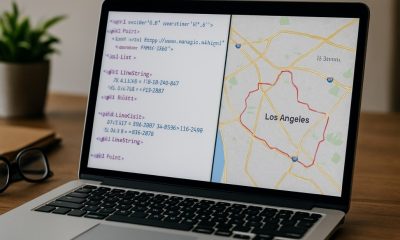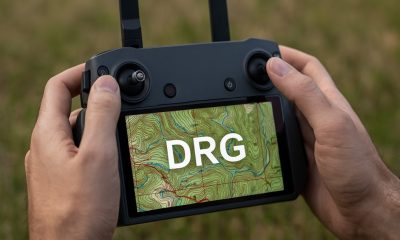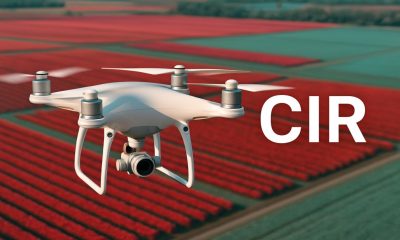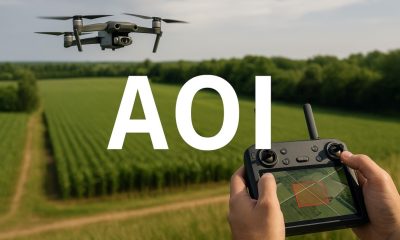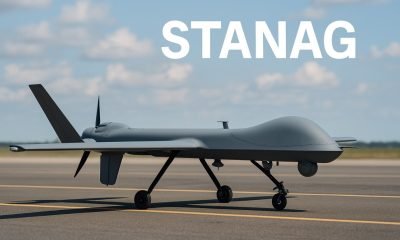- Acronym Guide
- AAM
- ABS
- AC
- ACAS
- ADS-B
- AFAC
- AGL
- AI
- AIM
- ALS
- AM
- AMA
- ANSP
- AOI
- APPI
- AUV
- AUVSI
- ARPAS-UK
- ASTM
- ATC
- BVLOS
- CAA
- CAAC
- CAB
- CASA
- CATT
- CBO
- CBR
- CBRN
- CDMA
- CDR
- CFR
- CIR
- COA
- COMINT
- CORS
- COTP
- COTR
- CPTED
- CV
- C2
- DAA
- DEM
- DFI
- DFS
- DGCA
- DHS
- DOD
- DPA
- DPEs
- DRG
- DRO
- DSM
- DSMX
- DSP
- DSSS
- DTM
- EASA
- EFT
- EO
- EOD
- EO/IR
- ELINT
- EMI
- ESC
- EVLOS
- eVTOLs
- FAA
- FCC
- FCS
- FHSS
- FICCI
- FLIR
- FOB
- FOV
- FPS
- FPV
- GBDAA
- GCP
- GCS
- GDPR
- GML
- GNSS
- GPS
- GSD
- GVC
- HDR
- HOGE
- IACRA
- ICAO
- ICS
- IMU
- INS
- IR
- ISA
- ISR
- ITU
- JARUS
- LAAMS
- LAANC
- LAATM
- LAI
- LBA
- LIDAR
- LOS
- LSALT
- MAC
- MAVLink
- MLIT
- MMS
- MSL
- MTOM
- NDAA
- NCSL
- NFZ
- NIST
- NMEA
- NOTAM
- NPA
- NPRM
- NTIA
- OBIA
- OEM
- OFDM
- OOP
- PASM
- PAV
- PCV
- PdM
- PEC
- PIC
- PID
- PIPL
- PLD
- PM
- PN
- PPK
- PPS
- PSM
- PWM
- UAM
- UAOP
- UAS
- UASTM
- UAV
- UCAVs
- UHD
- UHF
- USV
- UTM
- RAIM
- RCC
- RCS
- RFI
- ReOC
- RePL
- RMS
- ROI
- RPAS
- RPC
- RTH
- RTK
- SaR
- SAR
- SARP
- SBAS
- S.Bus
- SBIR
- SEDENA
- SfM
- SFOC
- SIGINT
- SLAM
- SMS
- SORA
- STANAG
- STTR
- sUAS
- TCAS
- TCCA
- TFR
- TIN
- TOF
- TP
- TPS
- TSA
- VHF
- VLOS
- VTOL
Drone Acronyms
What is SEDENA (Secretariat of National Defense)?
By
Jacob StonerTable Of Contents
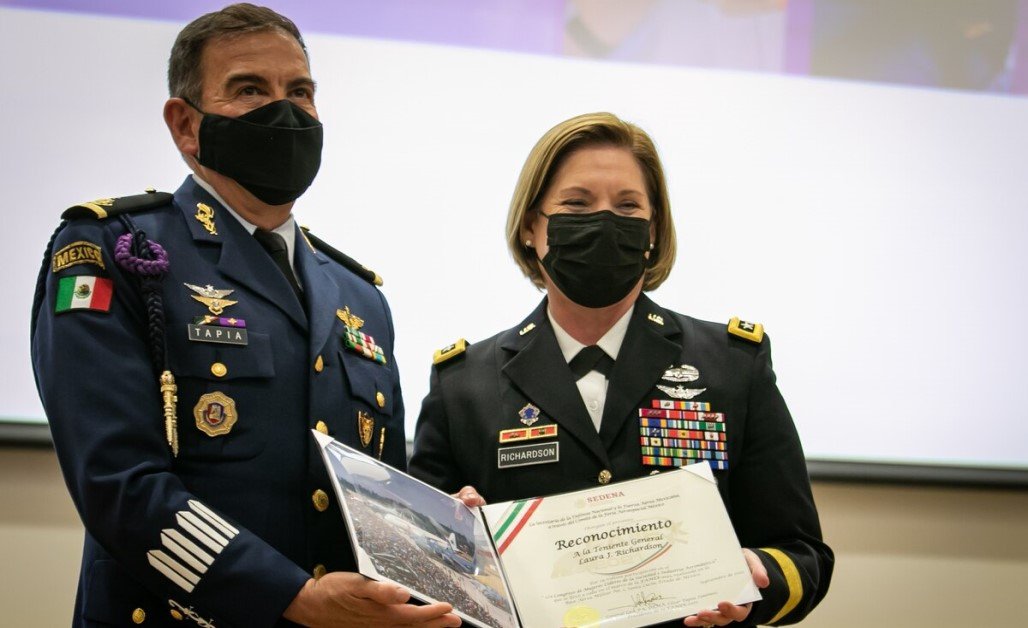
Definition
SEDENA stands for the Secretariat of National Defense (Secretaría de la Defensa Nacional), a branch of the Mexican government responsible for overseeing national security and defense operations. SEDENA manages the Mexican Army and Air Force and plays a crucial role in enforcing regulations related to national defense, public security, and civil protection. For drone operations, SEDENA establishes guidelines and restrictions, particularly concerning the use of drones in restricted airspaces and high-security zones within Mexico.
Usage
In the context of drones, SEDENA sets regulations that impact both domestic and foreign operators flying in sensitive areas. Drones are often restricted or require special permissions when operating near military bases, critical infrastructure, border areas, or locations of strategic importance. Drone operators must follow SEDENA’s protocols to ensure that they do not interfere with national defense operations or compromise security.
Relevance to the Industry
SEDENA’s regulations are essential for drone operations in Mexico, especially for commercial operators and foreign entities planning to fly in sensitive zones. The guidelines ensure that drone activities do not conflict with military operations or security measures. Compliance with SEDENA’s restrictions is crucial for operators working near borders, high-security areas, or public events. For both recreational and commercial drone users, understanding SEDENA’s requirements is important to avoid penalties and ensure safe and legal flights.
How Does the Secretariat of National Defense (SEDENA) Work?
Regulating Airspace and Restricted Zones:
- Designating Restricted Airspace:
- Identification of Sensitive Areas: SEDENA is responsible for identifying and designating restricted zones across Mexico, focusing on areas critical to national security and public safety. These zones often include military installations, government facilities, border areas, and sites of strategic importance. SEDENA enforces restrictions on drone operations within these areas to prevent unauthorized surveillance, interference with defense operations, and potential security breaches.
- Restricted Airspace Over Military Zones: Drones are generally prohibited from operating over or near military bases and facilities. SEDENA defines boundaries and airspace classifications around these areas, ensuring that both manned and unmanned aircraft adhere to the restrictions. Operators must check for restricted zones in their planned flight area to ensure compliance with SEDENA’s regulations.
- Setting Operational Restrictions:
- Altitude and Proximity Limits: For areas where limited drone access is permitted, SEDENA often enforces strict altitude restrictions and minimum proximity requirements to ensure drones do not pose a security risk. These restrictions are particularly stringent in regions surrounding government facilities and border zones, where any unauthorized flight is likely to be considered a security threat.
- Event-Specific No-Fly Zones: During large public events or high-profile gatherings, such as political events or state ceremonies, SEDENA may establish temporary no-fly zones. These zones prevent drones from flying in these areas to ensure public safety and reduce the risk of surveillance or disturbances.
Authorization Process for Restricted Areas:
- Submitting a Request for Permission:
- Application Process: Operators seeking to fly drones in SEDENA-restricted areas must submit a formal request outlining the purpose of the flight, flight paths, altitudes, and other operational details. This application includes information about the drone’s specifications, safety protocols, and the operator’s credentials to verify the legitimacy of the request.
- Review and Approval: SEDENA reviews each request based on criteria such as national security, public safety, and the risk level of the operation. Authorization is granted only if the proposed drone activity meets SEDENA’s safety and security standards. If approved, operators are given specific instructions and conditions under which they can conduct their flights.
- Compliance with Security Protocols:
- Real-Time Monitoring Requirements: In some cases, SEDENA may require operators to enable real-time monitoring of their flights. This may include live video feeds or telemetry data to track the drone’s location, altitude, and status throughout the operation. Such measures allow SEDENA to respond swiftly in the event of any security concerns or deviation from the approved flight plan.
- Data Collection and Privacy Considerations: For drones involved in surveillance, mapping, or data collection within restricted zones, SEDENA enforces strict protocols to ensure data security and privacy. Operators must limit the collection of sensitive data and ensure any collected information complies with national security policies. SEDENA may review collected data post-flight to verify compliance.
Enforcement and Incident Response:
- Monitoring and Detection of Unauthorized Drones:
- Detection Systems: SEDENA uses advanced detection systems, such as radar and radio frequency sensors, to monitor airspace around restricted zones. These systems identify unauthorized drones and track their movements in real-time. Drones detected in restricted areas without prior authorization may be subject to immediate intervention.
- Response Protocols: Upon detecting an unauthorized drone, SEDENA may implement countermeasures, including signal jamming or drone interception, to prevent potential security risks. In high-risk scenarios, SEDENA has the authority to disable or confiscate drones to safeguard national security.
- Penalties for Non-Compliance:
- Legal Penalties and Fines: Drone operators who violate SEDENA’s regulations are subject to penalties, which may include substantial fines, seizure of the drone, and, in severe cases, criminal charges. These penalties serve as a deterrent to prevent unauthorized drone activity in restricted areas.
- Revocation of Flight Privileges: Operators found in violation may have their flight privileges suspended or revoked, affecting their ability to conduct further drone operations in Mexico. Persistent or severe violations can lead to a permanent ban from operating drones within SEDENA’s jurisdiction.
Coordination with AFAC and Other Authorities:
- Collaborating with AFAC and Law Enforcement:
- Unified Airspace Management: SEDENA works in close coordination with the Agencia Federal de Aviación Civil (AFAC) to manage Mexican airspace effectively. This collaboration ensures a unified approach to drone regulation and enforcement, covering both civil and defense-focused aspects of airspace management.
- Law Enforcement Support: In cases where drone activity poses a potential threat to public safety or national security, SEDENA may collaborate with local law enforcement agencies. Together, they implement protocols for monitoring, responding to, and investigating incidents involving unauthorized drone operations in restricted zones.
- Maintaining Public Safety and Security:
- Protecting Critical Infrastructure and National Events: SEDENA’s protocols are essential for protecting critical infrastructure, sensitive government areas, and major public gatherings. By regulating and monitoring drone activity, SEDENA ensures that drones are not used to compromise public safety or national security.
- Evolving Security Measures: With the growth of drone technology, SEDENA continuously updates its security measures, detection systems, and regulations to address new risks and challenges posed by unmanned aerial systems (UAS) in Mexican airspace.
By enforcing airspace restrictions, managing authorization processes, and coordinating with other authorities, the Secretariat of National Defense (SEDENA) ensures that drone operations within Mexico do not compromise national security or public safety, particularly in sensitive and restricted areas.
Example in Use
“Before conducting their survey in a high-security border region, the research team obtained approval from SEDENA to ensure compliance with national defense protocols.”
Frequently Asked Questions about SEDENA (Secretariat of National Defense)
1. How does SEDENA regulate drone operations in Mexico?
Answer: SEDENA regulates drones by:
- Imposing Restrictions in Sensitive Areas: Limiting or prohibiting drone flights in military zones, critical infrastructure, and border regions.
- Requiring Special Permissions: Operators must obtain specific approvals from SEDENA to fly in restricted zones, ensuring that drone activities do not compromise national security.
2. What are SEDENA’s main responsibilities related to drone regulation?
Answer: SEDENA’s main responsibilities include:
- Airspace Control: Managing and securing airspace over sensitive areas.
- Defense and Security Protocols: Implementing policies to protect public safety and prevent unauthorized surveillance or potential threats from drones.
3. How can operators obtain authorization to fly in restricted areas under SEDENA jurisdiction?
Answer: To obtain authorization, operators must:
- Submit Documentation: Provide flight plans, drone specifications, and operator credentials.
- Demonstrate Compliance: Show that their operation will comply with safety and security protocols, including restricted altitudes and operational limitations.
For examples of these acronyms visit our Industries page.
As the CEO of Flyeye.io, Jacob Stoner spearheads the company's operations with his extensive expertise in the drone industry. He is a licensed commercial drone operator in Canada, where he frequently conducts drone inspections. Jacob is a highly respected figure within his local drone community, where he indulges his passion for videography during his leisure time. Above all, Jacob's keen interest lies in the potential societal impact of drone technology advancements.


